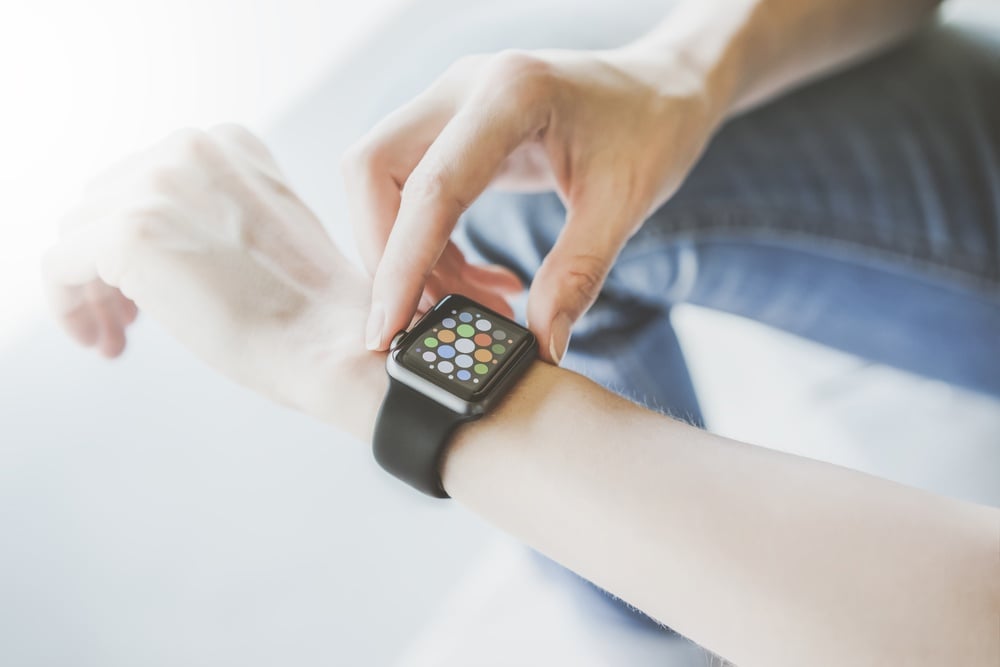A New Consumer Device In The Enterprise - It’s Deja Vu All Over Again!
It’s happened before. Remember when the iPhone launched in 2007 and the impact that it had on the enterprise? In one fell swoop the new device created an entirely new category of computing that offered significant benefits and major challenges for how enterprises would work with information. Challenges included how enterprises would allow their employees, partners and customers access to enterprise content, and how they would enable interaction with content on non-corporate provisioned devices. While the initial impact of the iPhone caught IT departments by surprise, Apple’s announcement of its planned entry into the computer wearables market in 2015 means that IT departments must prepare for the challenges, opportunities and impacts that this will have on their organization in terms of how they secure, work with and manage content delivered to these devices. And IT departments must be focused on user enablement and the user experience (ie, how users will interact and work with content on these devices), rather than IT administration and device security.
The Killer App
What’s great about wearables is the ability to work hands-free with a multi-functional computing device. And wearables aren't restricted to just smart watches. There's no telling what form factor they will ultimately be delivered in, but there’s no doubt that some wearables will be a great tool for enterprises to leverage.
We are just scratching the surface of ideas for the enterprise killer app wearables use-cases, but it’s clear that wearables will meet the needs of a number of enterprise business requirements. Consider how employee productivity and effectiveness could improve if workers had the right information delivered to them the moment when they needed it. What current processes could be automated if an interactive form with an embedded photo replaced a manual, paper-based report? What efficiency gains could be realized if a field-based service technician could show a product expert at corporate a real-time point-of-view video of a part failure in a machine while leaving their hands free to work on the repair? For processes that aren’t routine for mobile workers or that require a level of expertise that they don’t possess, wearables can provide instructions at the immediate point of need.
Wearables could provide enterprise customers with other use-cases, such as:
Replace employee ID cards & time recording systems
Wearables are a good platform to consolidate a number of things that we carry around during the day for work, such as corporate issued ID cards that are used for logical access to corporate properties. Entrance to the office would be granted when used with scanners that detect when the wearable passes by. In a manufacturing setting, wearables could replace time management systems that record when workers arrive, take breaks or leave work. Over time this could represent cost savings over paper-based recording systems or stand-alone human capital time-management systems commonly used by many companies.
Notifications
Meeting notifications to employees are often handled with email and calendar meeting requests. Using wearables would make notifications of new or upcoming meeting reminders more fluid as a user’s calendar would be integrated with the wearable device so users could tap to indicate whether they will be attending the meeting or not. In addition to meeting notifications, employees using wearable devices could receive emergency notices around environmental situations such as an building entrance closures, disaster events or emergency weather conditions that would require them to find immediate shelter. Instructions could accompany the emergency notification to ensure that employees are informed or reminded of corporate safety procedures.
Phone
Wearable devices can sense when an employee leaves their desk and can automatically route incoming calls to the wearable device. Voice capabilities in a wearable device could be used for communication over Wi-Fi networks.
Can a wearable provide a real world business advantage?
Don't expect users to create Powerpoint presentations on their wearable devices just yet, but it’s important to remember that wearables are for more than just notifications or instant forwarding of calls. As work becomes more fluid and dispersed, wearables will play a big part in this work style evolution.
For example, take Salesforce Wear, which was announced last month. It’s a brave foray into this market and it’s a great fit for the company as so many of its users are customer-facing. Salesforce.com's opinion is that wearables will represent a major productivity gain for enterprises and the company has a number of apps available for wearable devices in its Appexchange marketplace.
Most importantly, wearables are about a new contextual way of understanding information, and contributing data back to the business, which is something that is a real differentiator and can improve overall results.
How can I integrate wearables with an exiting infrastructure?
Classify wearables into two major categories - companion devices that require connection to a smartphone or other mobile device, and standalone devices that work with either their own network connection (cellular or Wi-Fi), or require special and direct connection transfer data. Companion devices are probably easiest to integrate; working with a linked smart phone or tablet device, the wearable can be linked and de-linked remotely with control via Bluetooth or other networking protocols inside the linked phone or tablet.
More security concerns?
Having just gotten over the impact of the smart phone on enterprise security, many corporate IT departments were hoping for a few years of stability. While we still don't know a lot about where the wearable devices will be used, and what degree of corporate information will be used on these devices, there can be no doubt that there will come a time when an employee loses their wearable device on an overseas trip, and needs to be sure that no confidential data is going to end up on Reddit.
Existing smart device application vendors are now well equipped to be able to integrate security controls into companion wearables, and to create secure versions of their tools for standalone devices. Look for application vendors that understand the potential uses of wearable devices and how they can tie security into the core of the app. Enterprises need to think beyond horizontal device security. Security and content governance must be embedded right into the core of the tools being deployed.
Investigate the potential
Start now by thinking about your business use case, and talking to your users about how they do their job. This is not something you can just flowchart to success. It’s an experiential movement that will take refinement in order to determine where an organization can best take advantage of hands-free, multifunctional computing.


